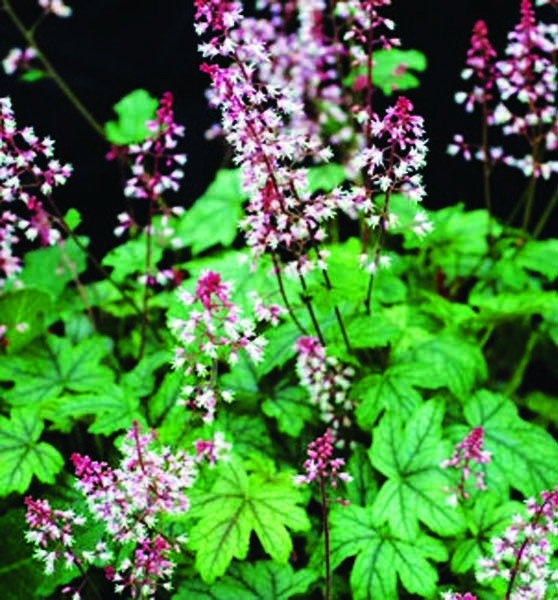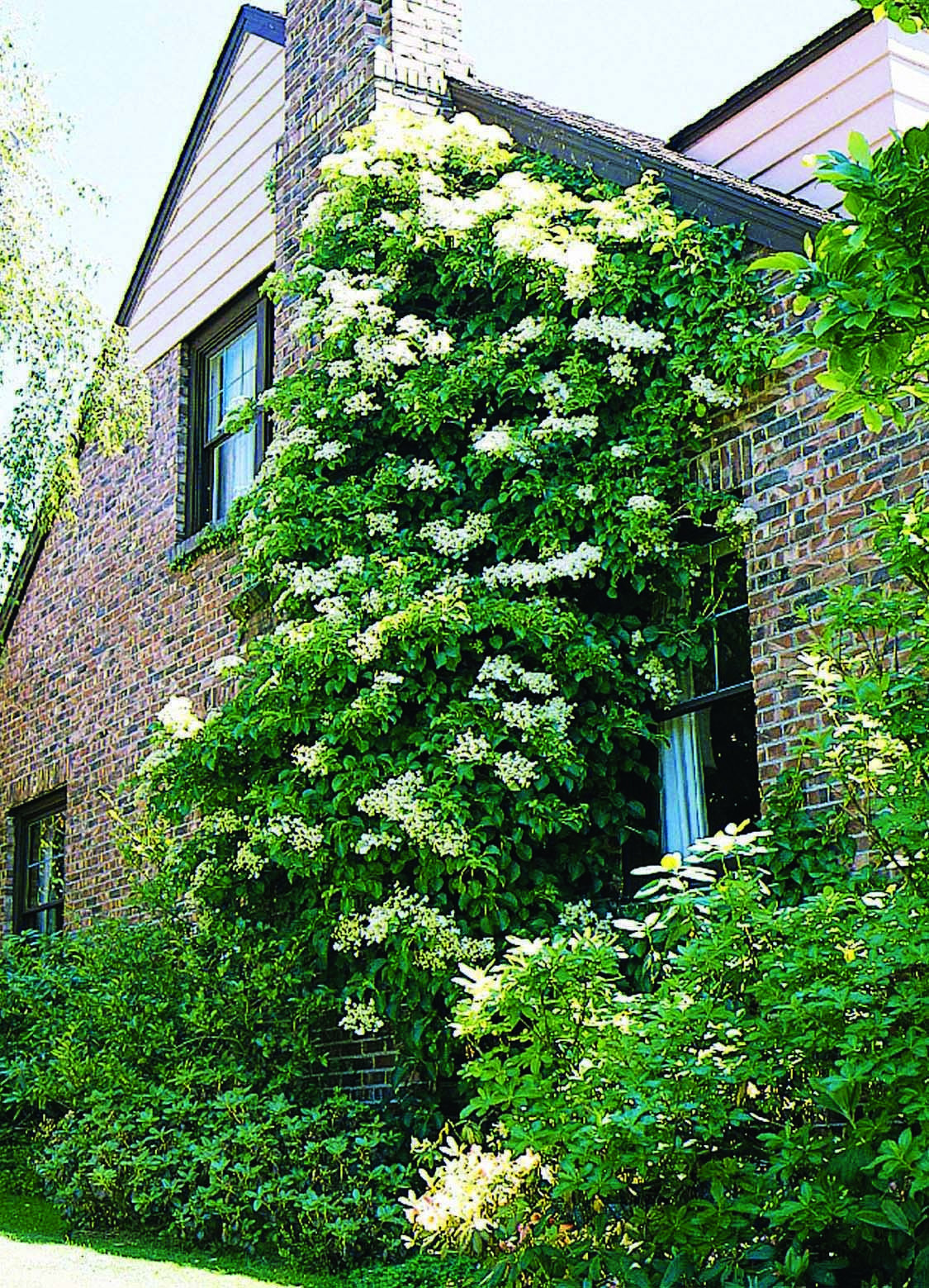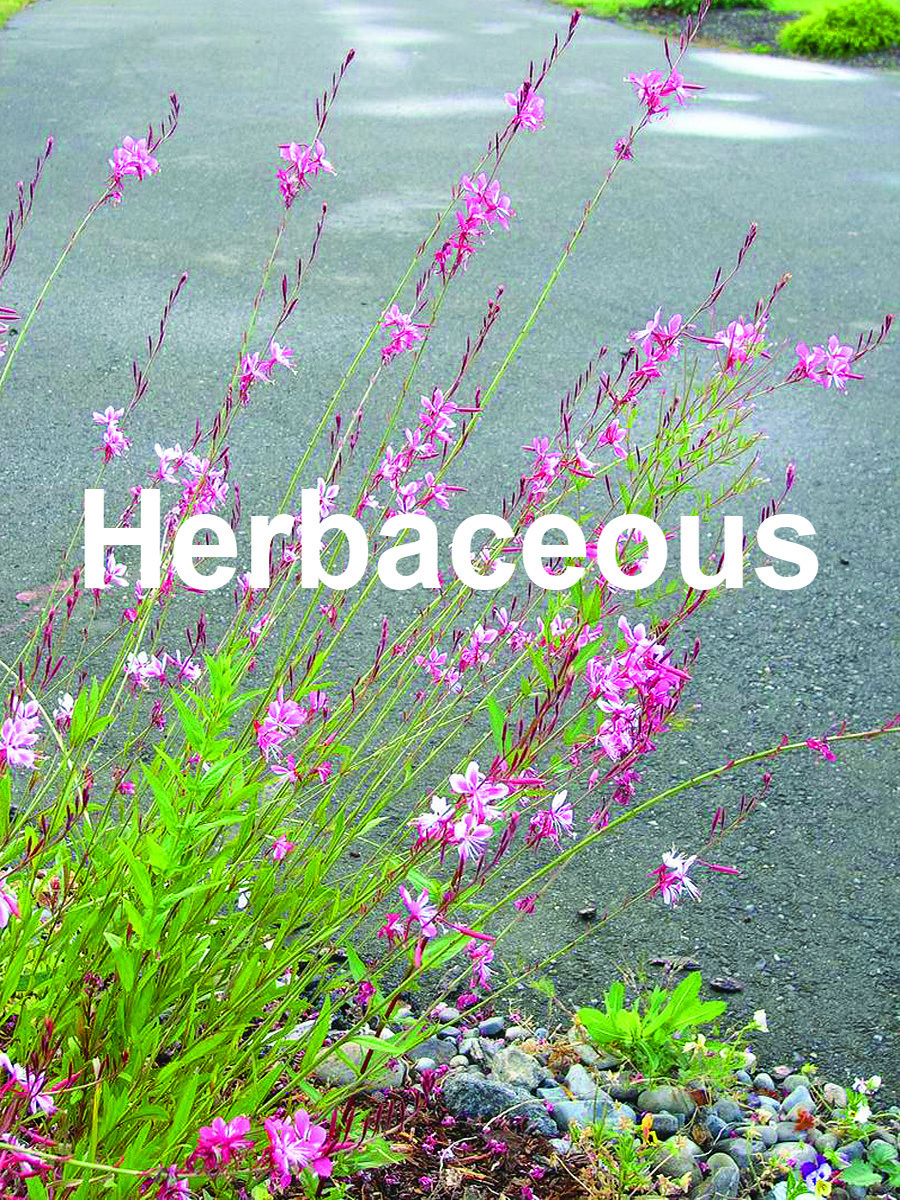Groundcover Alternatives for Western WA
Below, you will find non-invasive alternatives to common invasive or noxious weeds.
Looking to replace a specific plant? Click here to jump to that section!
Old Man’s Beard & Silverlace Vine
Atlantic & Invasive English Ivy Cultivars
Full List of Recommended Groundcover Alternatives
Key
Looking for a different type of plant?
Alternatives to Yellow Archangel

INVASIVE: Yellow Archangel
Lamiastrum galeobdolon
Class B Washington State Noxious Weed
Striking variegated leaves and the ability to thrive in shady areas makes yellow archangel a popular ornamental plant for groundcover and hanging baskets. Unfortunately, this trailing plant easily establishes wild populations, in many cases as the result of improper disposal of garden cuttings or hanging baskets. Yellow archangel forms dense, homogenous mats in forests and parks and is a serious problem in British Columbia and western Washington.
More choices: Bleeding heart (Dicentra formosa), wild lily-of-the-valley (Maianthemum dilatatum), three-leaf foamflower (Tiarella trifoliata), all of which are Washington natives, as well as Japanese Spurge (Pachysandra terminalis), barrenwort (Epimedium) species, sweetbox (Sarcococca hookeriana var. humilis), and minature London pride (Saxifraga ‘Primuloides’).
Learn more here:

Recommended Alternative: Wintercreeper
Euonymus fortunei ‘Silver Queen’ & ‘Emerald Gaiety’
This is a low-growing evergreen plant with attractive foliage.
• The variegated leaves of wintercreeper provide contrast in the low light preferred by yellow archangel.
• Wintercreeper will tolerate full sun as well as the shade that yellow archangel prefers.
USDA zones 4-8
![]()
![]()
![]()
Image courtesy of Monrovia Nursery

Recommended Alternative: Heucheras & Heucherellas
Heuchera & Heucherella species
Low-growing perennials, some native to the Northwest.
• These plants produce small, airy flowers above ornamental leaves in a variety of colors and patterns, rivaling the foliage of yellow archangel.
• Heucheras and heucherellas tolerate sun to light shade.
• Their delicate flowers are also attractive to hummingbirds.
USDA zones 4-9
![]()
![]()
![]()
![]()
Image courtesy of Terra Nova Nurseries

Recommended Alternative: Wild Ginger
Asarum caudatum
Low-growing perennials, some native to the Northwest.
Evergreen groundcover growing in part to full shade.
• Beautiful deep green, heart-shaped leaves smell of lemon-ginger when crushed.
• Unique purple-brown flowers that may be covered by leaves, unlike the insignificant flowers of yellow archangel.
• Grows in a variety of garden conditions and is drought tolerant once established.
• Grows by rhizomes and slowly forms expanding mats.
USDA zones 7-9
![]()
![]()
![]()
![]()
![]()
![]()
![]()
Image courtesy of Richie Steffen, Great Plant Picks
Alternatives to Old Man’s Beard & Silverlace Vine

INVASIVE: Old Man’s Beard & Silverlace Vine
Clematis vitalba & Polygonum albertii
Class C Washington State Noxious Weed & Monitor Species
Climbing vines such as old man’s beard and silverlace vine are commonly used on arbors and trellises. Yet these vines can establish in forests and along riverbanks where they can smother shrubs and trees and form dense mats in the understory, displacing native flora. Both vines produce thousands of tiny seeds, which are spread by wind or carried on the bodies of birds. Silverlace vine can also regenerate from garden cuttings tossed aside, making escape from cultivation easy.
More choices: Kiwi vine (Actinidia kolomikta), chocolate vine (Akebia quinata), Japanese hydrangea vine (Schizophragma hydrangeoides), climbing hydrangea (Hydrangea anomala subsp. petiolaris), and silvervein creeper (Parthenocissus henryana).
Learn more here:

Recommended Alternative: Sweet Autumn Clematis
Clematis paniculata (synonym C. dioscoreifolia)
This clematis is a vigorous and fragrant climber.
• This clematis has fragrant creamy white flowers.
• Like the invasive vines, this is a robust climber.
• It takes full sun to partial shade.
• Like silver lace vine and old man’s beard, Sweet Autumn clematis blooms from summer to fall.
• This climber grows up to 20 feet tall.
USDA zones 5-9
![]()
![]()
![]()
Image courtesy of Monrovia Nursery

Recommended Alternative: Italian Clematis
Clematis viticella & cultivars
This species includes a variety of colorful cultivars.
• There are various flower colors to choose from, whereas the invasive vines offer only white.
• Growing only 15 feet tall, it does not overburden trees like the invasive vines.
• This clematis prefers full sun.
• Like silverlace vine and old man’s beard, this plant is not particular about soil type.
Zones 5-9
![]()
![]()
![]()
![]()
Image courtesy of Pat Breen, Oregon State University

Recommended Alternative: Orange Honeysuckle
Lonicera ciliosa
Orange honeysuckle is a colorful northwest native that butterflies and birds love too.
• The flowers are a brilliant orange instead of white.
• It grows up to 30 feet tall, like old man’s beard.
• This native takes full sun to partial shade.
• Blooms occur from May to July, earlier than either of the invasive vines.
• Birds and butterflies are attracted to its edible berries and nectar flowers.
Zones 6-9
![]()
![]()
![]()
![]()
![]()
Image courtesy of Ben Legler
Alternatives to Atlantic & Invasive English Ivy Cultivars

INVASIVE: Atlantic & Invasive English Ivy Cultivars
Hedera hibernica & Hedera helix ‘Baltica’, ‘California’, ‘Pittsburgh’, & ‘Star’
Class C Washington State Noxious Weed
While over 400 cultivars of ivy are used for landscaping, only a few are considered invasive. When allowed to climb and mature, invasive ivies produce seed-filled berries which are spread by birds. A serious problem in western Washington, these cultivars spread into forests where the vines block sunlight, smother trees, and encourage rot. Dense mats of ivy blanket the forest understory, displace native flora, outcompete forest seedlings, and harbor pests such as rats.
More choices: silvervein creeper (Parthenocissus henryana), minature London pride (Saxifraga ‘Primuloides’), bearberry (Cotoneaster dammeri), wintercreeper (Euonymus fortunei), boxleaf honeysuckle (Lonicera pileata), sweetbox (Sarcococca hookeriana var. humilis), Boston ivy (Parthenocissus tricuspidata) and natives beach strawberry (Fragaria chiloensis) and evergreen violet (Viola sempervirens).
Learn more here:

Recommended Alternative: Crinkle-Leaf Creeper
Rubus pentalobus (synonym Rubus calycinoides)
Forms a great, durable carpet of rough leaves, dark green in summer and tinged reddish in winter.
• This creeper is a good groundcover for slopes and will grow to cover larger spaces.
• It is drought tolerant like ivy, once established.
• Crinkle-leaf creeper is an attractive evergreen, finer in texture than ivy—with leaves the size of strawberry leaves.
• It grows well in sun and partial shade and remains healthy with little care.
USDA zones 6-9
![]()
![]()
![]()
![]()
Image courtesy of Pat Breen, Oregon State University

Recommended Alternative: Kinnikinnick
Arctostaphylos uva-ursi
A great native plant for carpeting the ground, Kinnikinnick helps sustain wildlife.
• Its evergreen foliage and mat-like spreading habit give an emerald look year-round.
• Like ivy, kinnikinnick is adapted to well-drained sandy soils and sun.
• Though drought tolerant once established, unlike ivy, it does not tolerate shade.
• Unlike ivy, kinnikinnick flowers are ornamental. Whitish-pink bells appear in summer, followed by red berries.
USDA zones 5-10
![]()
![]()
![]()
![]()
![]()
Image courtesy of Ben Legler

Recommended Alternative: Climbing Hydrangea
Hydrangea anomala subsp. petiolaris
A good vine for climbing trees or walls or fences: holds on like ivy. Medium green, heart-shaped leaves are beautiful, but different in texture and scale.
• Large-leaved deciduous foliage will cover like ivy in summer, and cinnamon-red shaggy bark offers winter texture.
• Unlike ivy, it has beautiful lacey hydrangea-like blooms of cream-white in June which are good for dried arrangements.
• Plant is relatively disease free and easy to care for.
USDA zones 4-8
![]()
![]()
![]()
![]()
Image courtesy of Monrovia Nursery
Full List of Recommended Groundcover Alternatives

The following is a list of recommended groundcover plants for Western Washington. You can find more suggestions of non-invasive plants from your local nursery, WSU Master Gardeners, and at www.GreatPlantPicks.org.
- Wintercreeper, Euonymus fortunei ‘Silver Queen’& ‘Emerald Gaiety’
- Heucheras & Heucherellas, Heuchera & Heucherella species
- Wild Ginger, Asarum caudatum
- Bleeding Heart, Dicentra formosa
- Wild Lily-of-the-Valley, Maianthemum dilatatum
- Three-Leaf Foamflower, Tiarella trifoliata
- Japanese Spurge, Pachysandra terminalis
- Barrenwort, Epimedium species
- Sweetbox, Sarcococca hookeriana var. humilis
- Miniature London Pride, Saxifraga ‘Primuloides'
- Sweet Autumn Clematis, Clematis paniculata (synonym C. dioscoreifolia)
- Italian Clematis, Clematis viticella & cultivars
- Orange Honeysuckle, Lonicera ciliosa
- Kiwi Vine, Actinidia kolomikta
- Chocolate Vine, Akebia quinata
- Japanese Hydrangea Vine, Schizophragma hydrangeoides
- Climbing Hydrangea, Hydrangea anomala subsp. petiolaris
- Silvervein Creeper, Parthenocissus henryana
- Crinkle-Leaf Creeper, Rubus pentalobus (synonym Rubus calycinoides)
- Kinnikinnick, Arctostaphylos uva-ursi
- Climbing Hydrangea, Hydrangea anomala subsp. petiolaris
- Bearberry, Cotoneaster dammeri
- Boxleaf Honeysuckle, Lonicera pileata
- Boston Ivy, Parthenocissus tricuspidata
- Beach Strawberry, Fragaria chiloensis
- Evergreen Violet, Viola sempervirens






